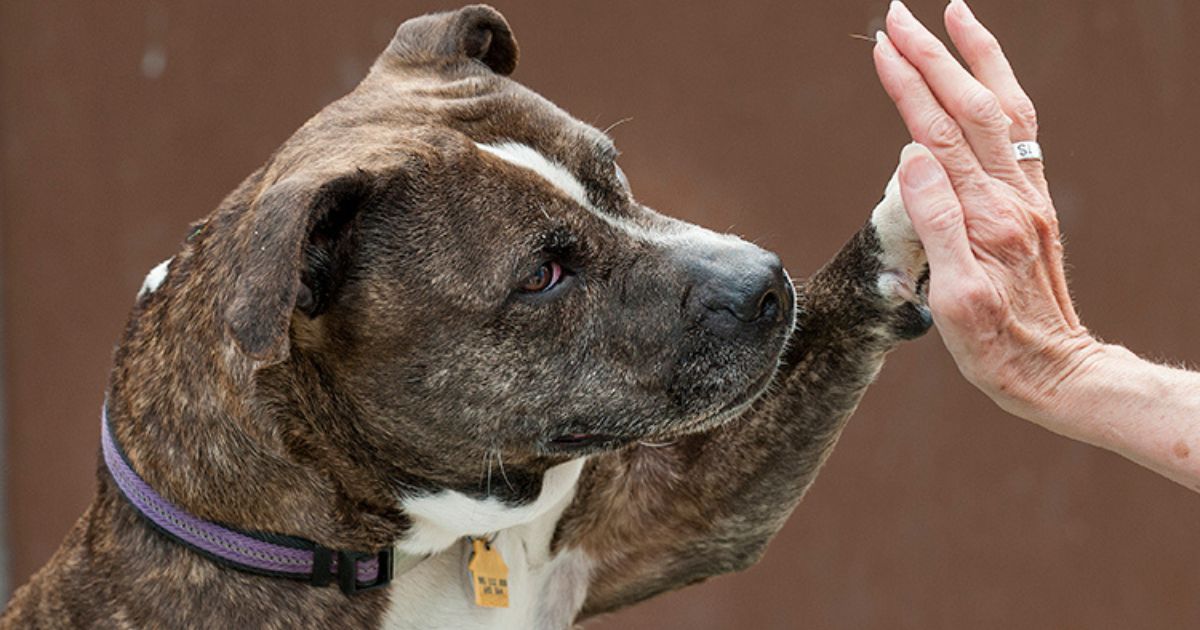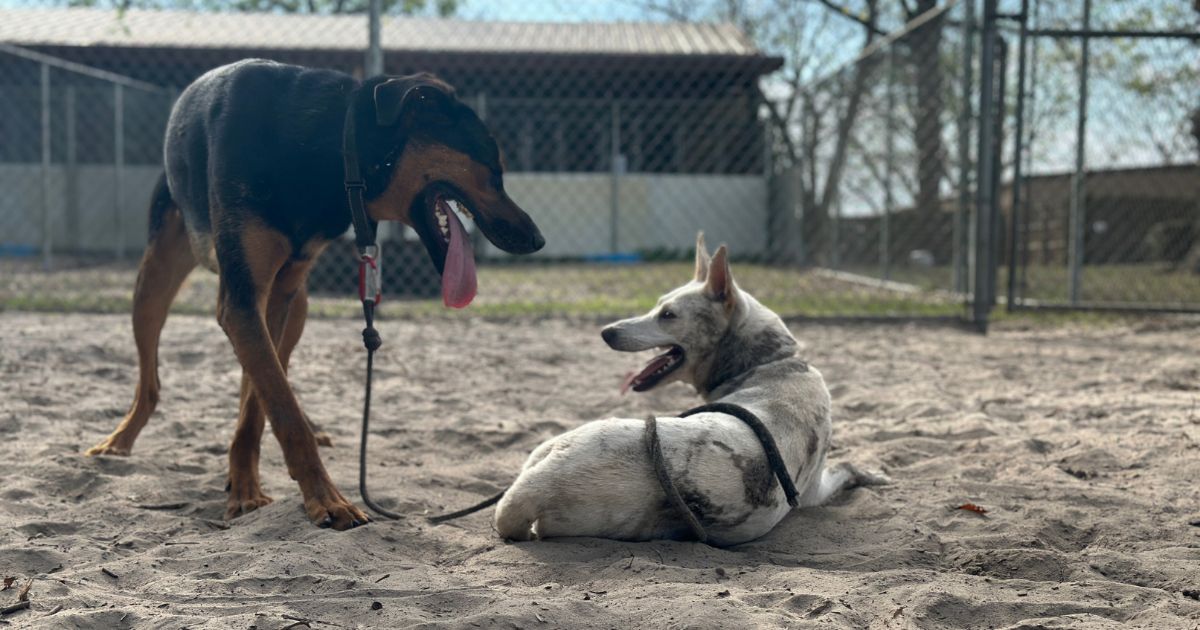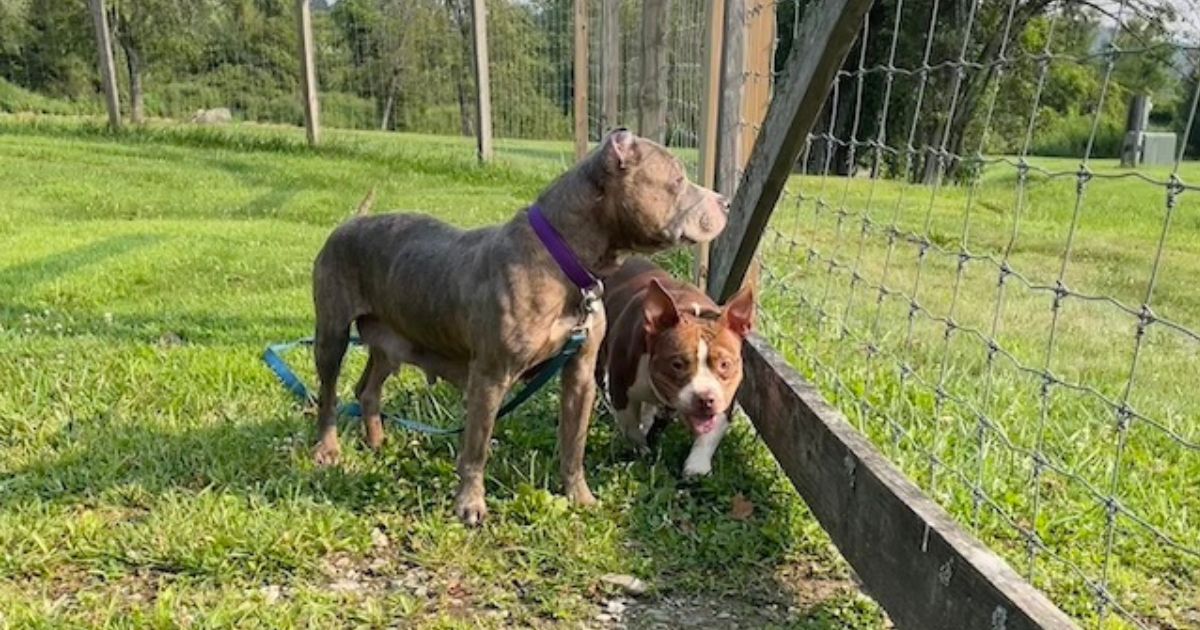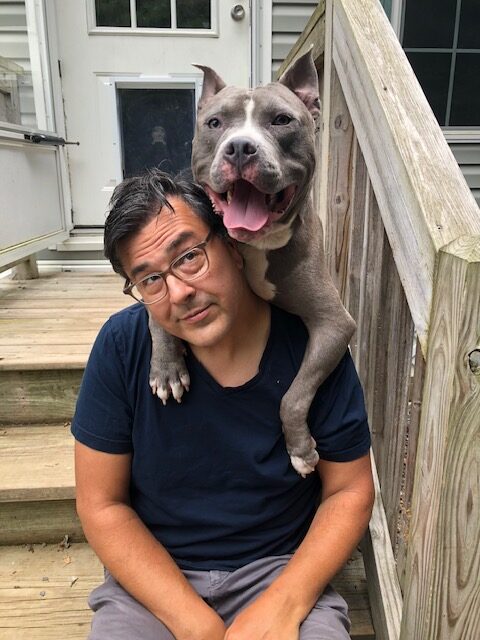This is a guest post from Kristen Auerbach, Deputy Chief Animal Services Officer at Austin Animal Center. At the time of this post, she was with Fairfax County Animal Shelter in VA.
About a month ago, Fairfax County Animal Shelter removed all breed labels from our adoption kennels. There was much discussion and debate prior to us making this decision. Would the public be confused? Angry? Would community members protest?
We were committed to being honest with potential adopters. If the dog they were interested in might be visually identified as a breed that faces restriction, we would make them aware that breed specific laws or housing rules could affect them.
But was that enough? Would taking breed labels off our kennels prove too disruptive to serve our purpose?
To our surprise, no one even asked why the kennel cards weren’t labeled with breeds.
We also learned that no matter what the kennel card says, potential adopters, volunteers and staff will make guesses. And they’re usually going to disagree with each other about those guesses.

We did notice an increase in people asking us about the breed of a particular dog. This turned out to be a good thing. The question provides the perfect opening for a staff person or volunteer to talk about the inaccuracy of breed labeling and the importance of getting to know each dog as an individual with its own unique personality traits.
Now that we’ve removed the labels from the kennel cards, we’ll be working with our shelter software system to remove the breed labels from our ‘adoptable’ pets list so dogs will be described only with their names, ages and personality profiles.
Our journey to do away with breed labels began about a year ago, when we stopped referring to dogs as ‘pit bulls’ or ‘Staffordshire terriers’ on our social media platforms. Between 2013 and 2014, adoptions of dogs visually identified as ‘pit bulls’ quadrupled and we knew we were on to something big. We talked about the individual dog’s personality, quirks, sociability with other dogs and people, but we stopped talking about breed.
We did this because we know the term ‘pit bull’ does not describe any breed of dog. Rather, it’s a subjective label that means different things to different people and has no basis in science or genetics. In our mission to get our adopters to see the dog not the label, and in the interest of full disclosure, the most honest thing we could do when describing our dogs was to simply say, “We don’t know what the breed or breed mix is.”

Things got a little more complicated when we stopped labeling all dogs, because we would all stand in front of a dog, and a staff member would say, “That IS a purebred Dachshund” or Rottweiler or whatever they thought it was. But, we asserted, the vast majority of dogs in our shelter are of mixed breed heritage and unless we have indisputable proof a dog came from a breeder and has a documented pedigree, we don’t know for sure. And even then, how does a breed label, any breed label help a dog get a home?
People are going to make their own visual breed identification whether it’s written on a kennel card or not. It simply isn’t necessary nor is it honest for us to present our guesses of any breed as if they are fact.
At our shelter, we’re having a lot of success focusing on the dog, not the perceived breed. But each animal welfare organization has its own challenges and in some places, not labeling is impossible because of breed specific legislation or breed-based adoption restrictions. What then?
It’s up to us, as advocates, no matter what our particular situation, to start explaining to people that breed labels are subjective, not based in science and that when we, as animal welfare professionals guess, we guess wrong at least 50% and often 75% of the time. We should be telling people that the vast majority of dogs in our shelters are mutts or mixed breeds and that the way they look says nothing reliable about their behavior.

If you are at a shelter or rescue where putting an end to breed labeling is a possibility, consider trying the following and tracking the results. You may be surprised at the immediate changes in your adoption numbers.
1. Stop using breed labels in social media posts. In some cases, a breed label gives your followers a quick reason to say no and keep scrolling. Instead, for a week, just tell the story of each particular dog. People love stories and it helps them connect with dogs they otherwise might be drawn to.
2. Remove the breed labels from your kennel cards for one week and see what happens. Make sure to spread the word to volunteers and staff so you can be on the same page with potential adopters.
3. Ask your shelter software provider if they can remove breed labels from adoptable dogs online. We use a provider that is able to remove the public labels on adoptable dogs (even though they will not remove the breed labels entirely).
4. Role play with staff and volunteers about how to respond when a visitor says, “What breed is it?” Not sure what to say? The truth works: “We’re not sure! The vast majority of our dogs are of mixed-breed origin and when we guess we are often wrong.”
5. It’s human nature to put things into categories and most of us label dogs by breed, even if it’s for a purely functional reason, like asking someone to, “Go adopt that Maltese.” Challenge yourself and your colleagues to find non-breed descriptors for your dogs.
It takes a lot of practice to break the breed labeling habit, but you can do it!
For more information on breed identification please see the National Canine Research Council’s website and the Animal Farm Foundation infographic, All Dogs Are Individuals.
And for more on Fairfax County Animal Shelter’s progressive and effective adoption policies, please see No Restrictions, Just Success.






